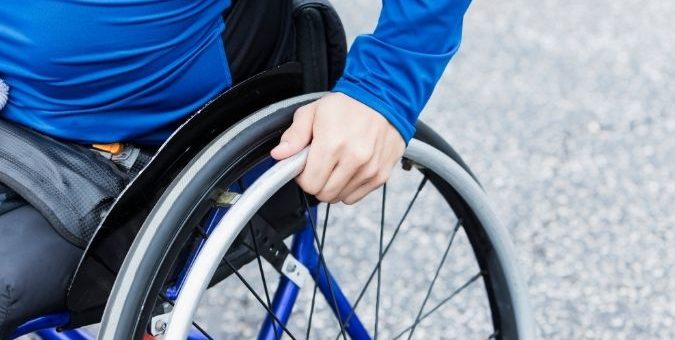
In this article we look at the reasons why an amputation may be needed, what the most common amputations are, what may take place, and the specific risk of amputation in relation to diabetes.
What is an amputation?
An amputation is the surgical or traumatic (accidental) removal of a part of the body, commonly an arm or leg, ranging from the loss of an entire limb to the loss of a part of an extremity (eg toe). Amputations generally occur in the hospital setting as a result of arterial disease (reduced blood supply), severe infection or following a traumatic injury.
Why might an amputation be needed?
The removal of a limb is something that is not undertaken lightly. Most amputations are done by doctors in a controlled hospital environment. Commonly, conditions which cause problems with blood supply to limbs and extremities and may necessitate amputation include ‘peripheral arterial disease’ (PAD) (which includes diabetes) – where an excess of plaque narrows an artery enough to restrict flow, and infections – such as gangrene, caused by conditions such as meningitis. Amputations may also be done if a limb is deformed and there are problems with limb movement and function. A smaller number of traumatic amputations take place outside the hospital setting, often due to injuries at work or road traffic collisions in which the immediate removal of the affected limb is necessary to save life.
What is the most common amputation?
Amputations in general are classed as major and minor. Minor amputations include the removal of toes and fingers. Major amputations are usually above or below a major joint – the elbow or knee. By far the most common type of amputation is a lower limb or ‘below knee’ amputation.
‘Peripheral Arterial Disease’ (PAD) remains the leading cause of all lower limb amputations, and one of the major causes of PAD in the UK is diabetes.
How is an amputation done?
In the more ‘controlled’ hospital setting, discussions will take place between the hospital team and the affected individual and their family before an amputation takes place. Both physical and psychological assessments will take place to measure how well an individual will cope with the emotional impact of amputation and whether there is a need for additional support. Environmental assessments, for work and home, will also take place to check if any changes will need to be made. Surgical techniques have improved over time and a balance will be struck between treating the disease or injury and saving as much of the limb as possible so that form and function are preserved. Most amputations will involve removing a section rather than the entire limb – and techniques such as bone reduction and smoothing are used to ensure that the remaining section of the limb is covered by an adequate amount of soft tissue and muscle.
Common Complications after an amputation
As in all major surgeries, major limb amputees are at risk of blood clots. These are related to not being able to move around as much after surgery. Blood clots can cause swelling, pain and redness, and in severe cases difficulty in breathing. Medical staff should take specific measures to reduce the risk of developing a clot, such as prescribing ‘compression’ stockings – to aid blood flow, and blood thinning medications if necessary. A high level of observation is required by the nursing team to ensure that none of these complications develop.
Amputees are also at risk of developing infections, especially around the ‘stump’ – and nursing staff should be acutely aware and trained to spot the signs of infections, such as warm, red and tender areas of skin, swelling, or offensive discharge or pus. Prompt action and treatment is required to avoid further problems to the stump.
There are occasions where complications can occur without any negligent treatment. However, in the majority of cases, regular observation of stump sites and prompt actions when problems are spotted will avoid long term injury.
What is the link between amputation and Diabetes?
Currently. 3.9 million people are living with diabetes in the UK. It is expected that around 5.3 million people will be living with this condition by 2025. About 90% of diabetics are ‘Type 2’, non-insulin dependent diabetics. Type 2 diabetics are 50% more likely to die prematurely from conditions such as heart disease, including the effects of ‘Peripheral Arterial Disease’. According to Diabetes UK, around 6000 amputations are carried out each year for people with diabetes, and the NHS report that those with diabetes are 15 times more likely to undergo amputations than others without the condition.
Minimising significant diabetes-related P.A.D. and amputation
The causes of diabetes are complex, multi-factorial and exist at both individual and societal levels. In respect of physical well-being, there should be careful monitoring and actions taken by the GP and the individual together to assist in reducing some of factors related to poor outcomes. These include the provision and attendance at dedicated clinics to avoid where possible the risks associated with ‘high blood sugar’. The patient should be at the heart of any treatment regimens, and the GP should orchestrate help and support from other clinicians to deal with specific medical complications.
A significant precursor to amputation of a lower limb in a diabetic individual is the formation of a ‘foot ulcer’ or lesion. These are caused by a reduction in the blood supply of the foot due to a restriction of blood flow in affected blood vessels (PAD). A patient’s foot (or feet) should be regularly assessed in foot clinic appointments, and problems can be prevented from getting worse and needing surgical intervention by prompt referral and treatment.
Lower limb amputations are the most common amputation in the UK. The majority of these are related to peripheral disease stemming from diabetes, with the attendant significant costs across the financial, emotional and physical spectrums. A proportion of these could be avoided by regular observation of high-risk individuals and prompt expert treatments. Important aspects of care of an individual with diabetes – to reduce the chances of having an amputation – are by regular clinic provision and attendance to monitor and control blood sugar levels and regular observation of physical well-being and the condition of the feet.
If you have recently had an amputation for any reason and are concerned about your medical treatment before, during or after, please contact us to find out how we can help.



















